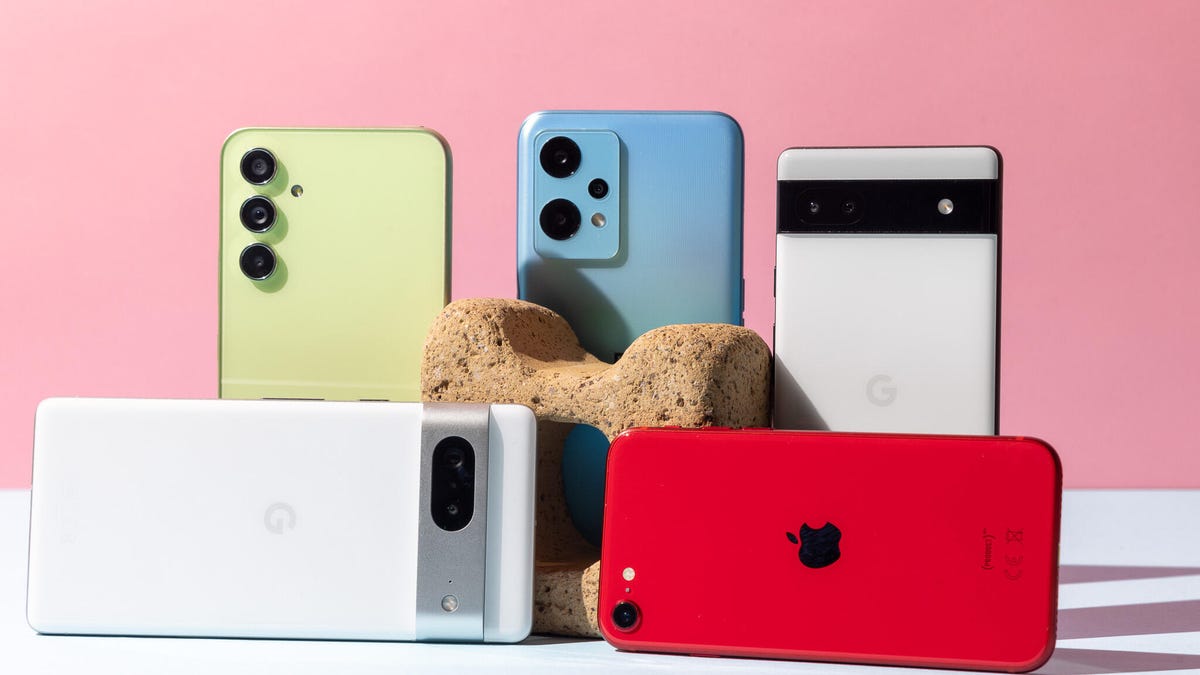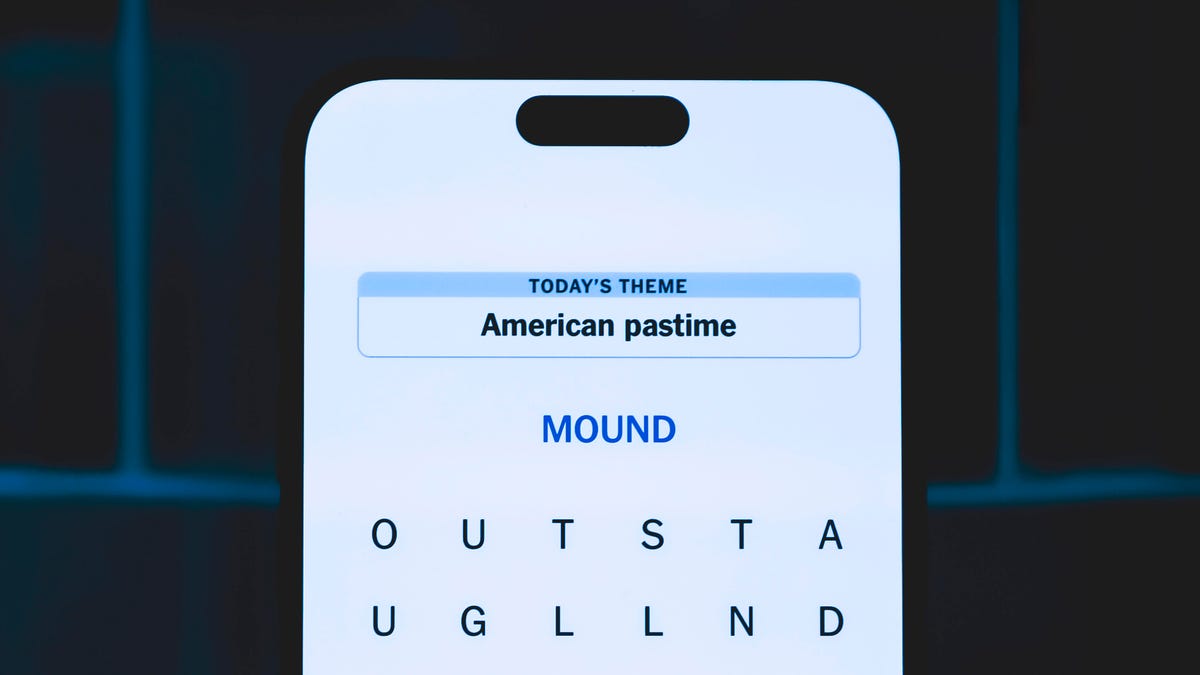Technologies
Refurbished Tech Is Always an Option for You, and It Could Be a ‘Joyful’ One Too
Joining the «joyful revolution» happening in the refurbished tech space is good for the planet and for dodging tariffs.

I’ve been writing about the right-to-repair movement and finding more sustainable ways to buy tech for years, but it wasn’t until earlier this year on a routine Tube journey across London that I heard of Back Market, a refurbished tech marketplace originating in France.
While avoiding any possible eye contact with strangers, as is good Tube etiquette, my gaze drifted up to a Back Market advert above the window pane. «Sorry, cats. Tech now has multiple lives too,» it said. It was amusing and immediately made me want to know more.
It turned out that I was late to the party, and this was just one of many cheeky ads that Back Market has run on the London Underground network and beyond. The company’s campaigns aim to normalize buying refurbished tech by making it fun, Back Market’s CEO Thibaud Hug de Larauze said at SXSW London on Tuesday.
«Don’t make people feel guilty, like you’re a bad person because you’re buying new,» he said. «It’s not going to work. It’s not going to change people’s behavior.»
Extending the lifespan of our phones, laptops and other tech products, whether through repair, responsible trade-ins that prioritize recycling or buying refurbished devices, is critical to ensure we’re not wasting precious minerals and exerting pressure on the natural world in ways that contribute to the climate crisis. It’s serious stuff, but Back Market’s lighthearted approach is about sparking «a joyful revolution» in the world of refurbished tech, Hug de Larauze said.
Buying into this revolution is good for the planet and protecting the well-being of the people in developing countries, whose health is impacted by mining for minerals or recovering them from discarded e-waste. It’s also good for another reason – avoiding price rises on new tech sparked by tariffs.
The repair and refurbish movement
Back Market isn’t the only marketplace willing to pay for your old tech and sell you a refurbished device, but it’s one part of a more widespread movement for change. Earlier this year, the company partnered with iFixit, which equips people around the world with the tools they need to repair their own tech while advocating for right-to-repair legislation.
«We want to enable people to repair by default, if they want and if they can,» Hug de Larauze said. «If they cannot, let’s trade in easily and adopt a refurbished one.»
Together, the companies encourage people to increase the time they hold onto their phones to five years, rather than the current average of two and a half years. They’re also applying pressure to phone manufacturers to increase software support to 10 years.
But Hug de Larauze has an even bigger request for tech companies, which he describes as «the next fight we need to push for.»
When tech manufacturers cease to provide ongoing support for devices, he wants them to unleash the hardware they’ve made so that it can be fully divorced from the operating system. The idea is that an old iPhone, for example, could get a new lease on life as something like a baby monitor or security camera if combined with different software.
This feels like a big ask for tech companies, with the main argument against the proposal likely to center on security concerns. Still, the world of refurbished tech is changing quickly. Over a million refurbished devices were purchased through Back Market last year alone and, according to Hug de Larauze, there are already signs that people are holding onto their smartphones for longer and trading in more often.
«For me, it’s about building a global ecosystem of service for everybody to basically access to repair by default,» he said. «Obviously, keep the device longer, but if for some reason you cannot, then easily trade it in and access refurbished devices instead.»
Technologies
Today’s NYT Strands Hints, Answers and Help for Jan. 8 #676
Here are hints and answers for the NYT Strands puzzle for Jan. 8, No. 676.

Looking for the most recent Strands answer? Click here for our daily Strands hints, as well as our daily answers and hints for The New York Times Mini Crossword, Wordle, Connections and Connections: Sports Edition puzzles.
Today’s NYT Strands puzzle was almost impossible for me, because it’s all focused on a certain TV show that I have never watched and barely know anything about. (Its fourth season premieres today, if you want to check it out.) If you’re like me, you need hints and answers, so read on.
I go into depth about the rules for Strands in this story.
If you’re looking for today’s Wordle, Connections and Mini Crossword answers, you can visit CNET’s NYT puzzle hints page
Hint for today’s Strands puzzle
Today’s Strands theme is: That’s just reality (TV)
If that doesn’t help you, here’s a clue: Show with plenty of trickery.
Clue words to unlock in-game hints
Your goal is to find hidden words that fit the puzzle’s theme. If you’re stuck, find any words you can. Every time you find three words of four letters or more, Strands will reveal one of the theme words. These are the words I used to get those hints but any words of four or more letters that you find will work:
- SIDE, HIDE, START, TART, FAITH, TENS, BANS, FATE, SILT, CAST, TRAIT
Answers for today’s Strands puzzle
These are the answers that tie into the theme. The goal of the puzzle is to find them all, including the spangram, a theme word that reaches from one side of the puzzle to the other. When you have all of them (I originally thought there were always eight but learned that the number can vary), every letter on the board will be used. Here are the nonspangram answers:
- CASTLE, SHIELD, MISSION, FAITHFUL, BANISHMENT
Today’s Strands spangram
Today’s Strands spangram is THETRAITORS. To find it, start with the T that’s three letters down on the far-left row, and wind across and then down.
Don’t miss any of our unbiased tech content and lab-based reviews. Add CNET as a preferred Google source.
Technologies
Today’s NYT Connections: Sports Edition Hints and Answers for Jan. 8, #472
Here are hints and the answers for the NYT Connections: Sports Edition puzzle for Jan. 8, No. 472.

Looking for the most recent regular Connections answers? Click here for today’s Connections hints, as well as our daily answers and hints for The New York Times Mini Crossword, Wordle and Strands puzzles.
Today’s Connections: Sports Edition was a bit of a stumper, though if you recognize famous-athlete names, you might get the purple category right away. And you might have never heard of the blue category topic. (That link is a big spoiler.) If you’re struggling with today’s puzzle but still want to solve it, read on for hints and the answers.
Connections: Sports Edition is published by The Athletic, the subscription-based sports journalism site owned by The Times. It doesn’t appear in the NYT Games app, but it does in The Athletic’s own app. Or you can play it for free online.
Read more: NYT Connections: Sports Edition Puzzle Comes Out of Beta
Hints for today’s Connections: Sports Edition groups
Here are four hints for the groupings in today’s Connections: Sports Edition puzzle, ranked from the easiest yellow group to the tough (and sometimes bizarre) purple group.
Yellow group hint: Sports in our nation’s capital.
Green group hint: Got any Band-Aids?
Blue group hint: Certain basketball league.
Purple group hint: Same first name.
Answers for today’s Connections: Sports Edition groups
Yellow group: A DC athlete.
Green group: Supplies for an athletic trainer.
Blue group: Unrivaled teams.
Purple group: Jerry ____.
Read more: Wordle Cheat Sheet: Here Are the Most Popular Letters Used in English Words
What are today’s Connections: Sports Edition answers?
The yellow words in today’s Connections
The theme is a DC athlete. The four answers are Capital, Commander, Mystic and Wizard.
The green words in today’s Connections
The theme is supplies for an athletic trainer. The four answers are bandages, ice pack, scissors and tape.
The blue words in today’s Connections
The theme is Unrivaled teams. The four answers are Breeze, Laces, Phantom and Vinyl.
The purple words in today’s Connections
The theme is Jerry ____. The four answers are Lucas, Rice, Stackhouse and West.
Don’t miss any of our unbiased tech content and lab-based reviews. Add CNET as a preferred Google source.
Technologies
Today’s NYT Mini Crossword Answers for Thursday, Jan. 8
Here are the answers for The New York Times Mini Crossword for Jan. 8.

Looking for the most recent Mini Crossword answer? Click here for today’s Mini Crossword hints, as well as our daily answers and hints for The New York Times Wordle, Strands, Connections and Connections: Sports Edition puzzles.
Need some help with today’s Mini Crossword? I found 6-Across to be especially tricky. Read on for all the answers. And if you could use some hints and guidance for daily solving, check out our Mini Crossword tips.
If you’re looking for today’s Wordle, Connections, Connections: Sports Edition and Strands answers, you can visit CNET’s NYT puzzle hints page.
Read more: Tips and Tricks for Solving The New York Times Mini Crossword
Let’s get to those Mini Crossword clues and answers.
Mini across clues and answers
1A clue: Donate
Answer: GIVE
5A clue: Piece of equipment in curling or Quidditch
Answer: BROOM
6A clue: Tidbit of information
Answer: DATUM
7A clue: Prone to daydreaming
Answer: SPACY
8A clue: Athletic shorts fabric
Answer: MESH
Mini down clues and answers
1D clue: Flavor of a purple lollipop
Answer: GRAPE
2D clue: Greek letter I’s
Answer: IOTAS
3D clue: Go to bat (for)
Answer: VOUCH
4D clue: Award with Daytime and Primetime categories
Answer: EMMY
5D clue: Erotic practice in «Fifty Shades of Grey,» for short
Answer: BDSM
Don’t miss any of our unbiased tech content and lab-based reviews. Add CNET as a preferred Google source.
-

 Technologies3 года ago
Technologies3 года agoTech Companies Need to Be Held Accountable for Security, Experts Say
-

 Technologies3 года ago
Technologies3 года agoBest Handheld Game Console in 2023
-

 Technologies3 года ago
Technologies3 года agoTighten Up Your VR Game With the Best Head Straps for Quest 2
-

 Technologies4 года ago
Technologies4 года agoBlack Friday 2021: The best deals on TVs, headphones, kitchenware, and more
-

 Technologies4 года ago
Technologies4 года agoGoogle to require vaccinations as Silicon Valley rethinks return-to-office policies
-

 Technologies4 года ago
Technologies4 года agoVerum, Wickr and Threema: next generation secured messengers
-

 Technologies4 года ago
Technologies4 года agoOlivia Harlan Dekker for Verum Messenger
-

 Technologies4 года ago
Technologies4 года agoiPhone 13 event: How to watch Apple’s big announcement tomorrow
